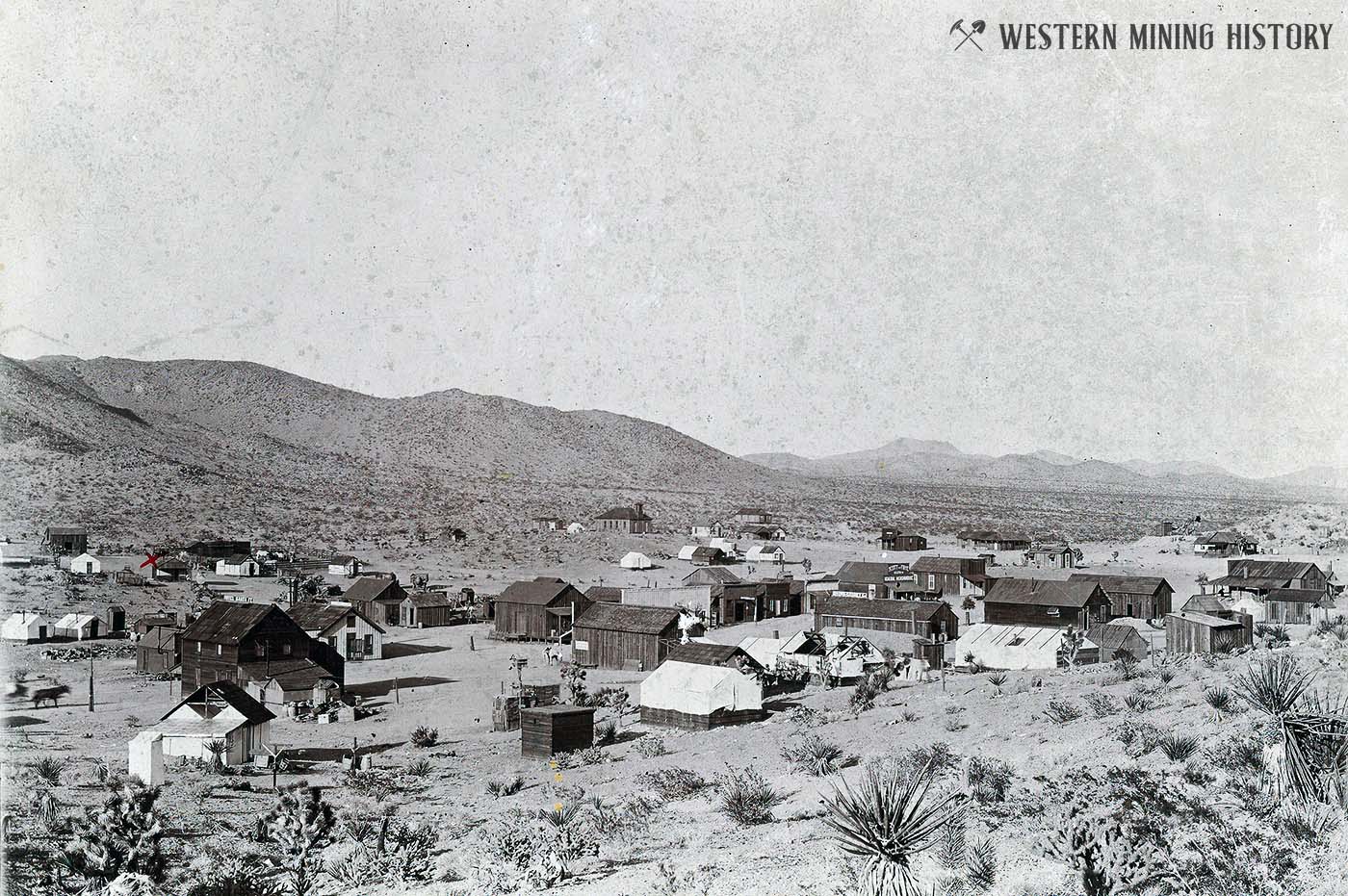Searchlight History
The area west of the Colorado River, where Searchlight is now located, had been extensively prospected for years before the discovery in the mid-1880s that led to the establishment of the Searchlight district. Although it was relatively close to both a railroad line and long-established steamboat routes on the river, the region’s mineral wealth remained hidden due to the absence of prominent outcrops and veins that were often barren at the surface.
Although George Frederick Colton is often credited with the first discovery in 1897, early pioneers of the camp later claimed that Fred W. Dunn of Needles, California, had actually made the initial discovery at least a year earlier. It was Dunn’s correspondence with Boston investors that sparked their interest in the area and led to the critical financial backing that helped bring the early mines into production.
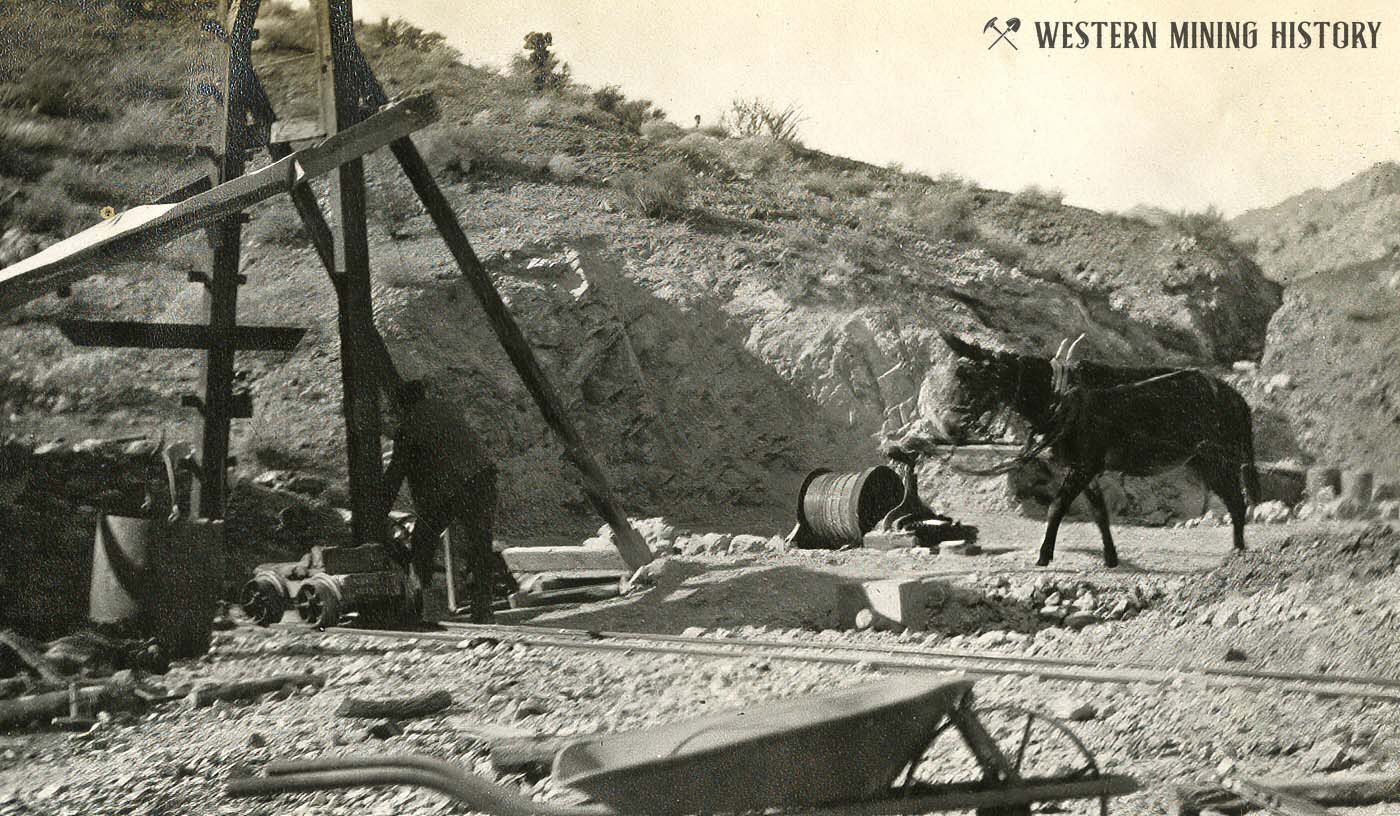
In 1898, this region of Nevada was part of Lincoln County, and Picohe was the county seat. Pioche was so distant that it was decided to maintain a local office for recording claims. On July 20, 1898, a meeting was held in the single wooden building in camp, and a mining district was formed.
There are many theories as to how the name Searchlight was chosen, but one story was that George Colton, while prospecting in 1897, declared “there is something here, but it would take a searchlight to find it.”
By the end of 1898 the Searchlight camp had two stores, two saloons, a hotel, and a post office. Lack of water and transportation infrastructure slowed the development of the district, and by June of 1899 just 150 people resided in the camp.
The Boston syndicate held several claims in the area, including the most valuable—the Quartette—and in 1899, they organized the Quartette Mining Company. Due to the lack of water at the mine site for milling operations, the company constructed a 20-stamp mill and cyanide plant on the Colorado River in 1900, approximately twelve miles from Searchlight.
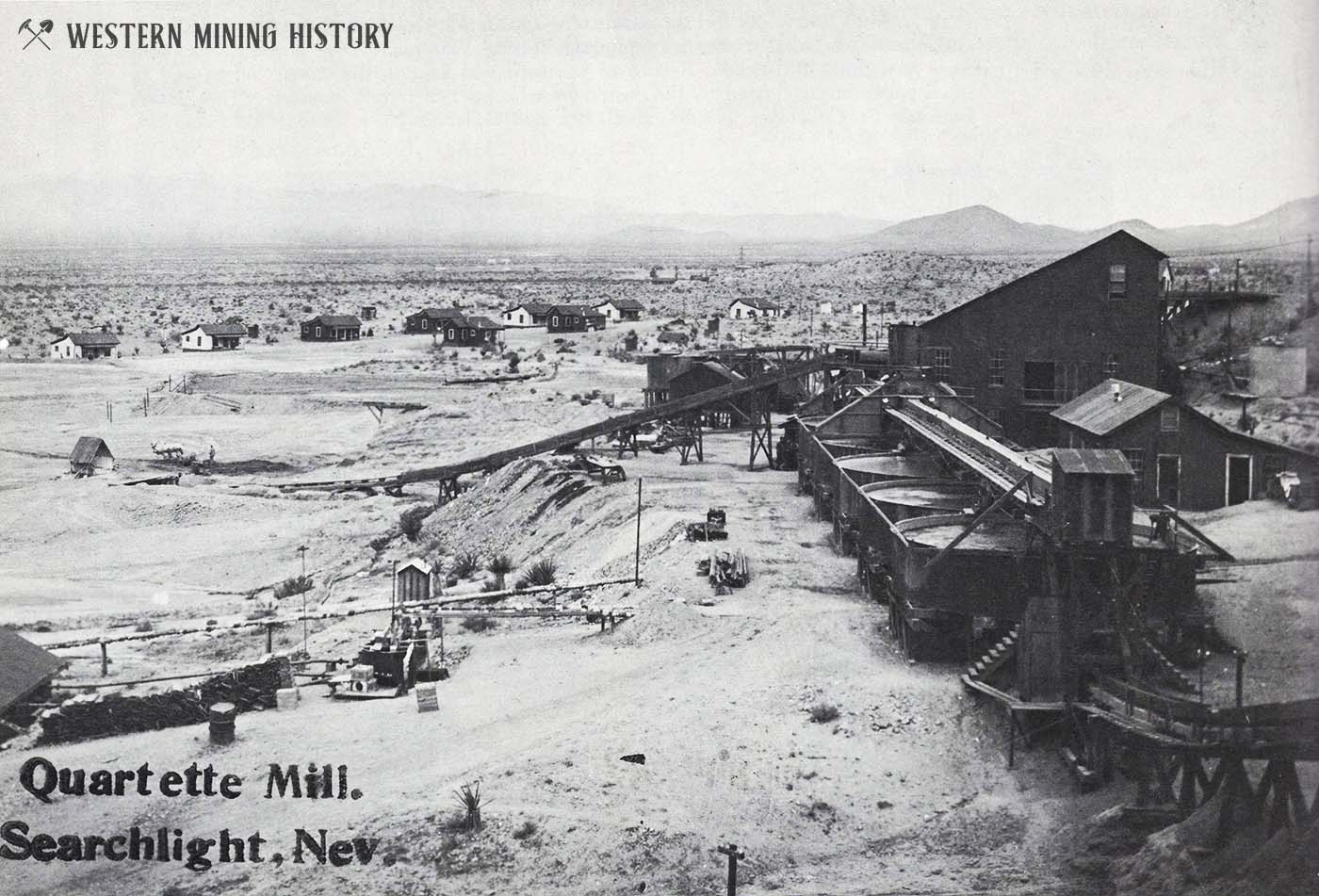
In May of 1902, the company completed the construction of a narrow-gauge railroad linking their mines with the mill. Several newspaper articles in 1901 stated that the planned rail line was going to be electric, although it is unclear whether it was powered by electricity or steam when it was actually built.
At the mill site a landing was established that linked the district with steamboat traffic on the Colorado River. This became the favored route for both freight and passenger traffic to Needles California, and for a time a town sprang up here with the name Quartette, or Quartette landing.
As the mining operations got deeper, significant water was finally encountered that allowed for mills to be built closer to the mines. In 1906 the mill at Quartette Landing, along with the narrow-gauge railroad that linked it to the mines, was abandoned.
The years between 1897 and 1903 were characterized by development of mines and infrastructure and consolidation of claims. Most of the valuable ore bodies were found at a minimum depth of 200 feet, too deep for individual miners to develop themselves, by 1903 most of the claims had been bought up by the Quartette company and several others.
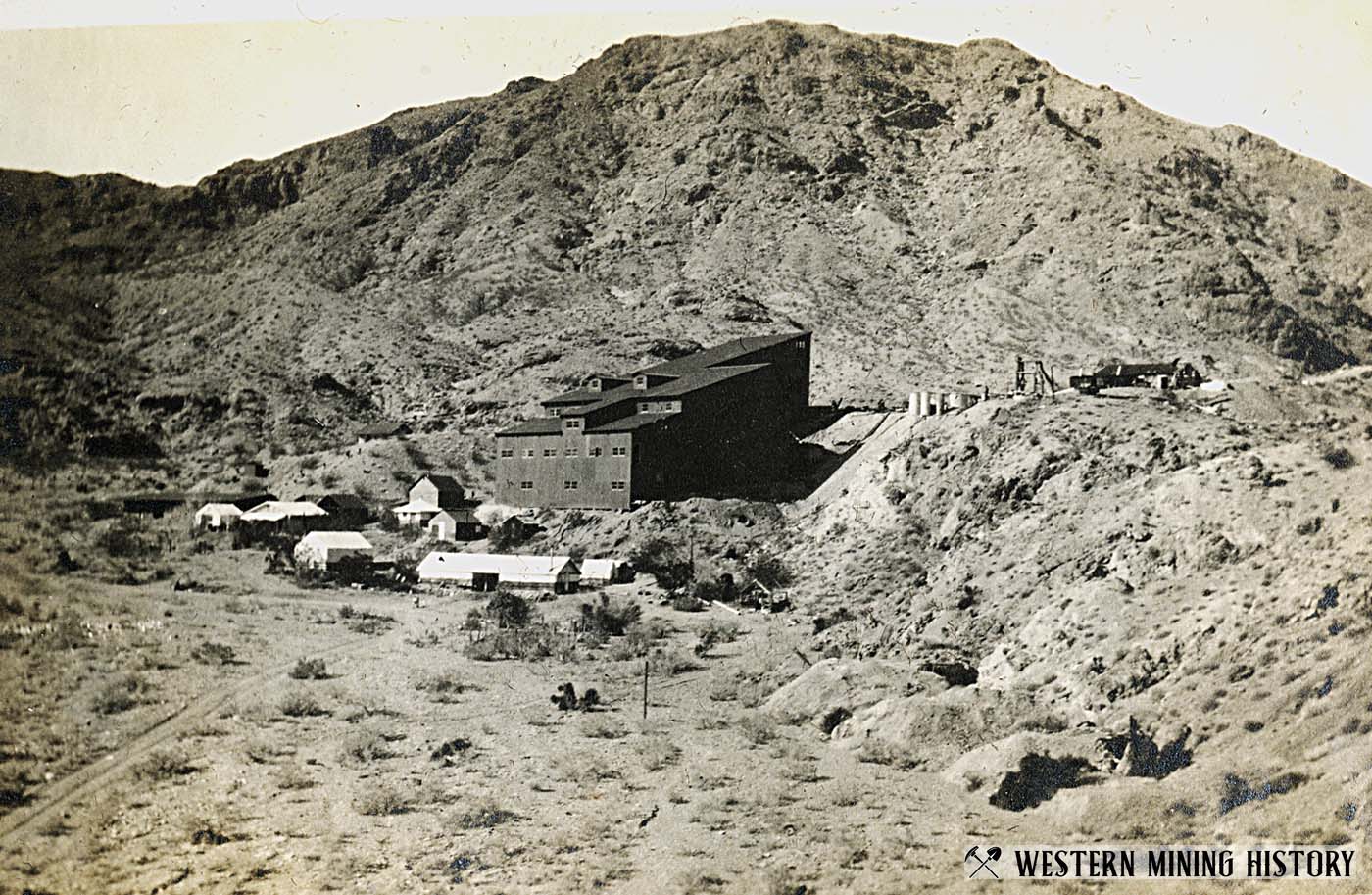
A period of steady production was achieved that marked the boom years for the district which lasted from 1903 to 1910. The peak year was 1907, when the district got its first proper railroad connection with the completion of the Santa Fe Manvel branch. This year also marked many notable new ore discoveries in the mines.
Searchlight peaked in 1907 with over 1,500 residents. The town had over a dozen saloons, numerous commercial businesses, telephone service, and two newspapers. Over 40 mines were active, though the Duplex and Quartette were the primary producers.
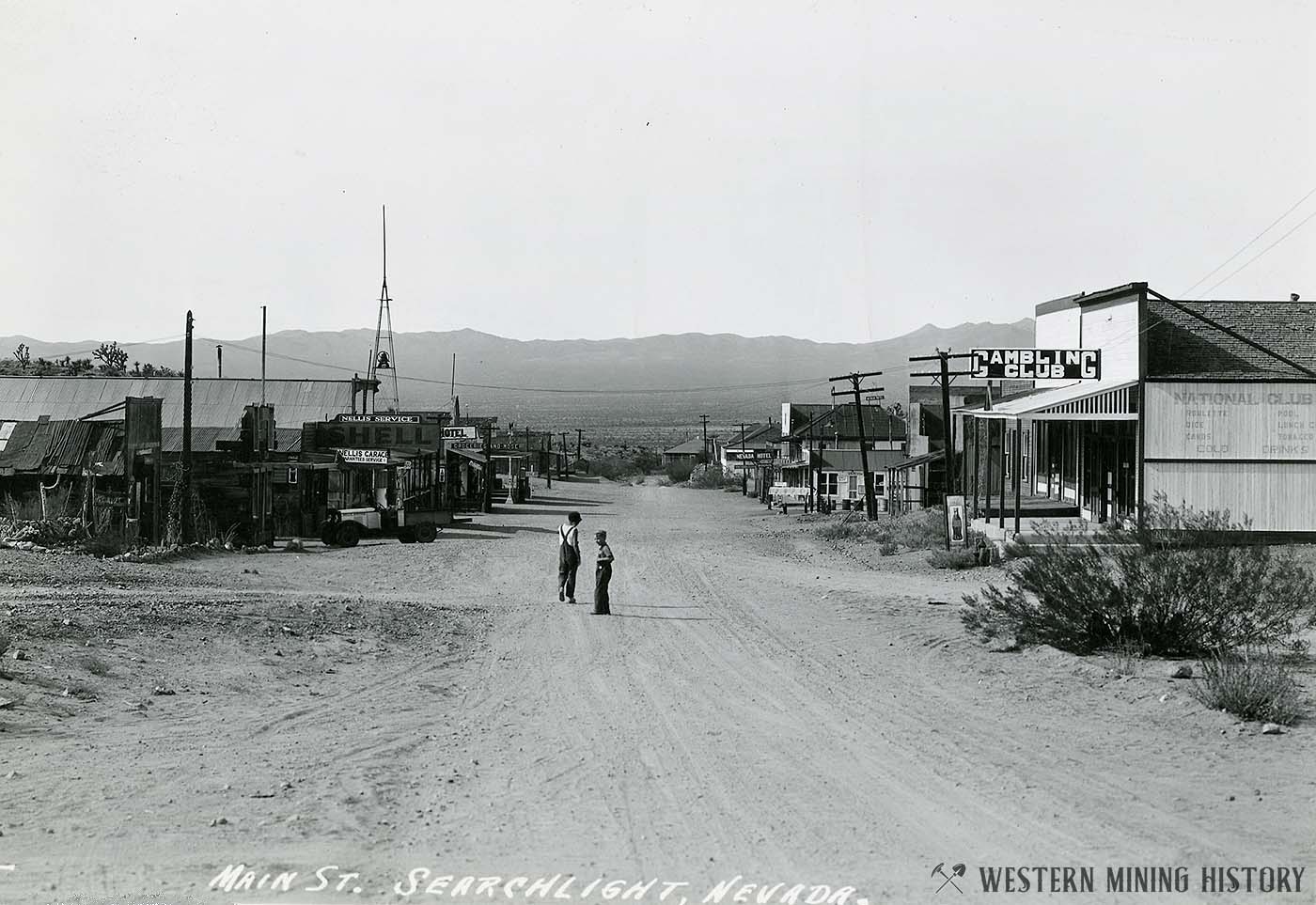
Production from the mines declined steeply starting in 1911. The town lost a large percentage of its population and the railroad abandoned its line in 1924. Mill tailings were reworked in the 1930s and 1940s but this was the last mining activity of any significance. The town was never abandoned and today has around 440 residents.
Nevada Mining Photos

A Collection of Nevada Mining Photos contains numerous examples of Nevada's best historic mining scenes.
Nevada Gold
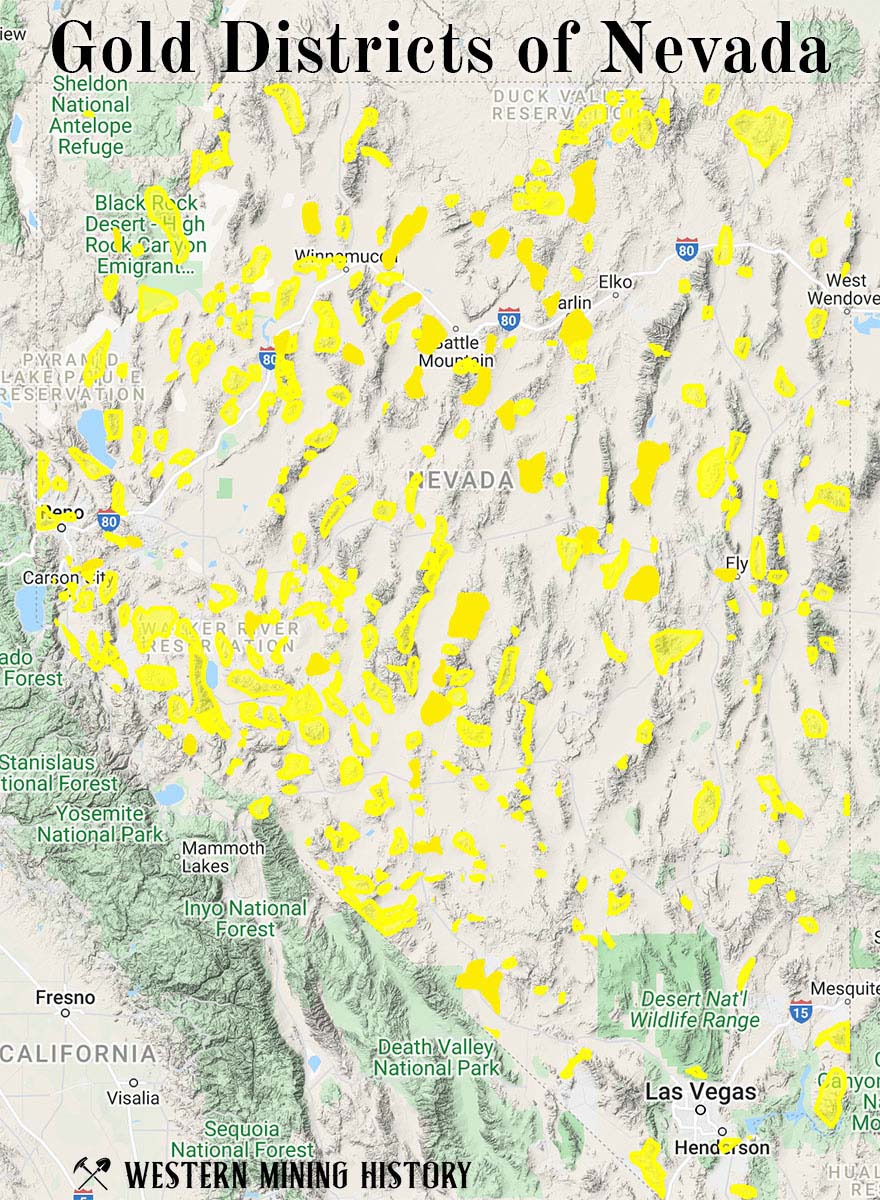
Nevada has a total of 368 distinct gold districts. Of the of those, just 36 are major producers with production and/or reserves of over 1,000,000 ounces, 49 have production and/or reserves of over 100,000 ounces, with the rest having less than 100,000 ounces. Read more: Gold Districts of Nevada.
